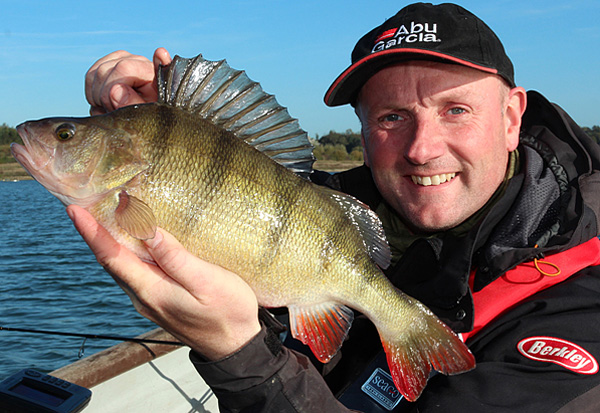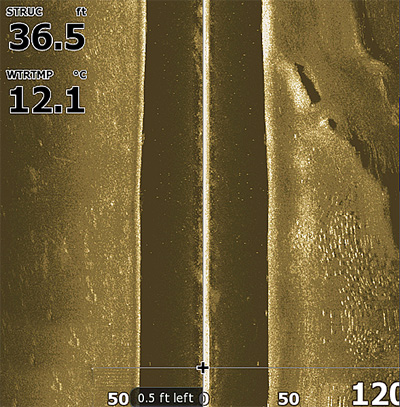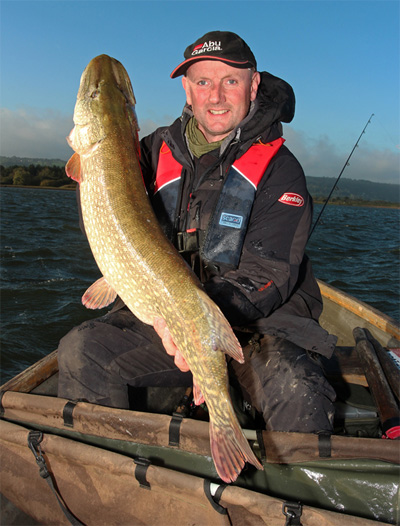Over the last few weeks it has been quite shocking how many friends have commented on how tired I am looking. Now, if it was just one or two people then I would have put it down as one of ‘those things’, but the comments have just kept coming. Bags under my eyes, deepening wrinkles spreading across my face, a slightly hunched gait, yes it can mean only one thing…I am spending far too much time messing about in boats on the windswept trout reservoirs.
These huge expanses of water really get into your blood if you let them and bring on a kind of fever that lasts until you are locked out for the winter. The limited amount of predator fishing, normally ending around the beginning of December, definitely adds a level of urgency to the fishing too. Most of all though it is the thought of what could be out there in that 300, 600, 1000 or more acres of deep, windswept, apparently barren, expanse of water that interrupts my normally sound sleep and drives me from one side of the country to the other in search of predators.
September was hot and the pike and zander didn’t really want to know, quite as we expected really, but fortunately the perch were much more obliging and some nice fish came to the net, as I mentioned in last month’s ‘Doc Spot’.
October continued in a similar vein, with more time and effort spent in search of the perch. Interesting it was too. As the days drew rapidly shorter and the water temperature began to fall the perch started to migrate. Not slowly, but often moving a big distance in a matter of days. In September the fish had been in relatively shallow water, and often close to obvious structures and weed lines; by the second week in October they were in 20 feet of water and by the end of the month often in deeper water still.

We caught fish, using drop shotting tactics and fishing on the drift to try and locate the shoals of perch. We had some good sport and would hit the odd small group of bigger fish, but it was very much a case of hunting for a needle in a haystack and lure choice became absolutely critical. Not that the lure shape made that much difference but the colour had to be right to bring more than just the odd tentative pluck on the line. In the relatively clear water of early October bright greens and yellows worked well but, interestingly, after big winds stirred up the water in the middle of the month the preferred colour seemed to change to darker browns and purples. It will be interesting to see if this trend continues.
 Eventually I became convinced that there was a better way of hunting those perch and one that would cut down massively on the almost random searching and hopefully teach me a lot more about the reservoirs into the bargain. Raiding the piggy bank I decided it was time to invest in a Structure Scan unit to run alongside my normal echo sounder.
Eventually I became convinced that there was a better way of hunting those perch and one that would cut down massively on the almost random searching and hopefully teach me a lot more about the reservoirs into the bargain. Raiding the piggy bank I decided it was time to invest in a Structure Scan unit to run alongside my normal echo sounder.
Structure scan enables you to see the lake bed, and to some extent any fish, to either side of a moving boat, rather than the normal straight down view that you get with a normal sounder. This obviously gives you massively more information, allowing you to search swathes of the lake (about 100 feet either side of the boat) quickly, and to hunt out features and sometimes even fish!
The new unit didn’t turn up until my last trip of the month, but even using it for the first time the difference it made was amazing, as features I already knew existed were plotted in detail. I even found a shoal of perch on the unit, turned the boat around and managed to catch a few of them. It was looking like my investment had been a good one!
October also marked the start of pike fishing on the undisputed queen of British pike reservoirs, Chew Valley near Bristol. I could write a book about our experiences and the behaviour of the pike on Chew, but the fact of the matter is that the pictures of massive pike on the internet and in the weeklies can give a slightly false impression of how productive it really is.
Yes, big fish do get caught with more regularity than at any other venue, probably ever. Yes, there are more big fish in there per acre than anywhere else. But balance this against the huge amount of angling pressure on the place (40 boat anglers and 20 bank anglers each day of the autumn and spring seasons), and you can see that there are a lot more disappointed anglers than successful ones. There is a big element of luck in which fish picks up your bait, as there is in all fishing.
 Unlike other trout ressies, Chew seems to show few signs of flagging. Most others have produced big pike for a few seasons before falling away, but not Chew. Already this season it has produced some immense fish, topped by an amazing pike of 43lb. I’m not sure if the length of that fish was measured at the time of capture, but I estimated it against the width of the boat at about 48 inches! Four feet of pike!
Unlike other trout ressies, Chew seems to show few signs of flagging. Most others have produced big pike for a few seasons before falling away, but not Chew. Already this season it has produced some immense fish, topped by an amazing pike of 43lb. I’m not sure if the length of that fish was measured at the time of capture, but I estimated it against the width of the boat at about 48 inches! Four feet of pike!
So far our results have been steady, a couple of 20s to me and a special fish to my regular boat partner. After all the days we have spent fishing together it was a very special moment to witness the capture of his dream fish, but that is his story for another day. We are hardly setting the world alight, but every time I hit the M5 motorway towards Bristol I dream that today might just be the day.
Most nights I return home a little wiser, a fair bit poorer, and without a lot to show for my efforts. I sit in the car for the two hours it takes me to get home thinking the day over. Who caught what? How could I have fished better? What could push the odds slightly more in my favour? Reservoir fishing has its highs and its lows; it is a war of attrition where you have to learn to live with the elements, develop an understanding of the environment and use whatever skills you possess to make the most of the limited time available. It really is magical fishing, and every time you feel a knock on your lure or the float bobs there is that surge of adrenalin, for there be monsters…











